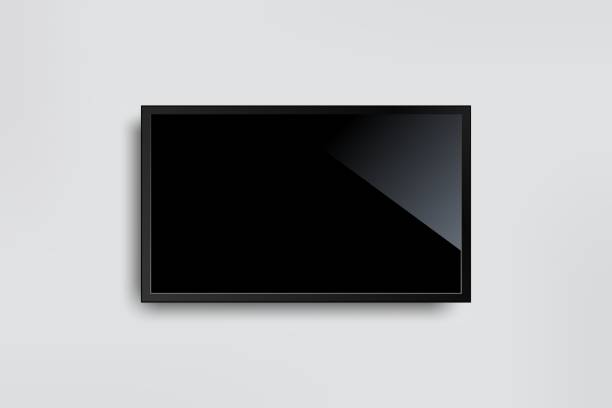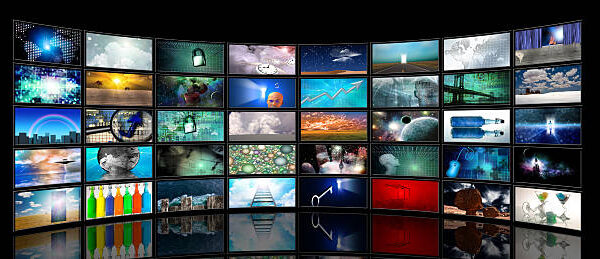What Does Lcd Stand For? How It Work?
Modern displays appear to have a wide range of labels: high definition, 3D, smart, 4K, 4K The list keeps going with ultra. LED and LCD are the two most popular labels. What sets these two apart from one another? Exists a difference between the two? And does this distinction favor one over the other for particular activities like gaming or graphic design?
Table of Contents
What Is Lcds
Flat panel displays of the LCD (Liquid Crystal Display) variety operate primarily using liquid crystals. Due to their widespread use in gadgets like smartphones, televisions, computers, and instrument panels, LEDs have a wide range of applications for both consumers and businesses.
Light-emitting diode (LED) and gas-plasma displays were two types of technology that LCDs replaced. Compared to cathode ray tube (CRT) technology, LCDs allowed displays to be much thinner. Because they operate on the idea of blocking light rather than emitting it, LCDs use much less energy than LED and gas-display displays. An LCD’s liquid crystals use a backlight to produce an image in place of an LED’s light-emitting diode.
LCDs started to be replaced by new display technologies like OLEDs as they took the place of older display technologies.
How Lcds Work
Millions of pixels make up a display. The quantity of pixels in a display is frequently used to describe its quality; for instance, a 4K display has pixels that measure 3840 x 2160 or 4096 x 2160. Red, blue, and green subpixels—commonly referred to as RGB—make up each of the three pixels that make up a pixel. A different color can be produced when the subpixels in a pixel change their color combinations. Together, the pixels on a display can create millions of different colors. A picture is produced by rapidly turning on and off the pixels.
Every type of display controls pixels in a unique way, including CRT, LED, LCD, and more modern types of displays. In essence, LCDs use liquid crystals to rotate polarized light while being lit by a backlight and having their pixels turned on and off electronically. Both the front and back of each pixel have polarizing glass filters; the front filter is angled at a 90-degree angle. The liquid crystals, which can be turned on and off electronically, are sandwiched between the two filters.
Either an active matrix display grid or a passive matrix display grid is used to make LCDs. The term “thin film transistor (TFT) display” is also used to describe the active matrix LCD. At each intersection of the conductor grid that makes up the passive matrix LCD are pixels. Any pixel’s light is managed by sending a current between two grid conductors. The luminance of a pixel can be controlled with less current in an active matrix because a transistor is present at every intersection of pixels. Because of this, the current in an active matrix display can be turned on and off more frequently, speeding up screen refresh.
Some passive matrix LCDs have dual scanning, which scans the grid twice with current in the time it takes for one scan in the original technology. But between the two, active matrix continues to be the better technology.
How Lcd Displays Work
The outermost glass sheet, which makes up each of the two components that make up a pixel, contains the subpixels. The two sheets are positioned between the liquid crystals.
Since the liquid crystals are arranged in a liquid state, white light from the backlights behind the screen of LCD monitors cannot pass through them. The liquid crystals, however, straighten out and permit light to pass through them when the pixel is in use because the monitor applies an electric current to them [2].
Each pixel has three distinct backlights that can shine through a red, blue, or green color filter, allowing the pixel to emit a particular color.
Structure Of An Lcd Screen
From the rear, which is farthest away from you, to the front, which is nearest to you, here is how an LCD is organized:
- Backlights
- Sheet #1
- Liquid Crystal
- Sheet #2, with color filters
- Screen
Types Of Lcds
There are various LCD models, including:
- Twisted Nematic (TN), which has fast response times and is reasonably priced. However, the contrast ratios, viewing angles, and color contrasts of TN displays are poor.
- Comparing IPS Panels to TN LCDs, IPS Panels offer significantly better contrast ratios, viewing angles, and color contrast.
- Between TN and IPS displays, vertical alignment panels (VA Panels) are regarded as having a medium level of quality.
- A top performer in terms of color reproduction range when compared to IPS displays is Advanced Fringe Field Switching (AFFS).
Types Of Backlighting
While both LCD and LED monitors use liquid crystals, the backlighting is what really distinguishes them from one another [2].
Lcd Backlighting
Cold cathode fluorescent lamps, or CCFLs, are used as the backlights in typical LCD monitors. These fluorescent lights are evenly distributed behind the screen to provide even lighting throughout the display. It will be uniformly bright throughout the entire image.
Led Backlighting
LED displays do not use fluorescent lighting. Instead, they use “light-emitting diodes,” which are incredibly tiny lights. Regarding LED backlighting, there are two approaches: full-array backlighting and edge lighting.
Full-array Backlighting
Full-array backlighting evenly distributes the LEDs across the entire screen, much like an LCD setup. The LEDs are positioned in zones, which makes them unique. The ability to dim individual LED lighting zones is known as local dimming.
Local dimming is a crucial feature that can significantly enhance image quality. The best images are those with a high contrast ratio, or those with both very bright and very dark pixels at the same time.
When a part of the image needs to be darker (like a night sky), the LEDs in that area of the image can be dimmed to produce a truer black. On typical LCD monitors, where the entire image is evenly lit, this is not possible.
Greater picture quality can be achieved on the monitor by using local dimming to produce more precise illumination.
Edge Lighting
There is edge lighting on some LED monitors. In this scenario, LEDs are positioned on the screen’s edge rather than in the center. The LEDs can be positioned in:
- Along the bottom of the screen
- Along the top and bottom of the screen
- Along the left and ride sides of the screen
- Along all four sides of the screen
Edge-lighted displays can’t produce images with the same level of quality as full-array LED displays because they lack the ability to locally dim the light. Edge lighting, on the other hand, enables producers to make extremely thin displays at a lower production cost, making them better for those on a tight budget.
Comparing Lcd To Led
LCD monitors are the same as LED monitors. Not all LCD monitors, however, use LEDs. Similar to how all birds are birds, but not all birds are eagles. While the names may be difficult to understand for those combing through specifications to find the best monitor, once you break it down, it’s simpler to comprehend than you might think.
We’ll go over the technical details and naming conventions before highlighting a few HP monitors that might be the ideal fit for your requirements. Let’s examine LCD and LED monitors in greater detail and discuss how to choose the best one for you.
Full-array LED monitors almost always offer better picture quality than LCD monitors. But remember that the best LEDs are full-array LEDs. It’s possible that LCD monitors are superior to edge-lit LEDs.
Between Lcd And Led, Which Is Better For Gaming?
Your top option for gaming should be a full-array LED monitor. Avoid its edge lighting. You’ll have fewer gaming-friendly viewing angles if you use edge lighting, which is a drawback. If you like to game while sitting directly in front of the screen, that won’t be a problem. The visibility of an edge-lit LED decreases as you move away from the center viewing angle, though, so if you like to recline in your chair or observe from various angles.
However, edge-lit LEDs have worse glare problems than full-array LEDs do, even if you play while standing directly in front of the monitor. That is as a result of the uneven lighting (extremely bright around the edges, darker as you get closer to the display’s center). The viewing angles and anti-glare of LCD monitors are typically better than edge-lit LEDs because the pixels are evenly lit.
Edge-lit Leds Are Better For A Tight Space And Budget
There are two significant benefits to edge-lit LEDs. Since edge-lit LED monitors are typically thinner than other types, they are a good choice if you have a small space in which to fit your monitor. Additionally, they are easier on the wallet because they cost less to manufacture.
Don’t Forget About The Specs
Don’t forget to read through all of the specifications when you’re looking for a new display. In addition to the backlighting type, you should consider the resolution and refresh rate.
The number of pixels displayed on the monitor is referred to as resolution. Keep in mind that the more pixels you have, the more dynamic your color composition can be. Monitors of the highest caliber have a minimum 1920×1080 resolution.
Refresh rate is a term used to describe how quickly your monitor updates the display with fresh data from your computer’s GPU. Get a monitor with a very fast refresh rate (30 Hz to 60 Hz) if you play video games to avoid screen tearing, a distracting visual effect that occurs when the monitor can’t keep up with the GPU.
Liquid Crystal Display Explained
Liquid crystals assist in the creation of an image in both types of displays. The backlights make the difference. The backlights of an LED monitor use light-emitting diodes, as opposed to the fluorescent backlights of a standard LCD monitor. Although they come in a variety of backlight configurations, LED monitors typically have better picture quality. Additionally, some backlight setups produce images that are superior to others.
Lcd Monitor Vs. Led Monitor – A Brief History
The most widely produced displays up until 2014 were plasma ones. The LCD, however, then took control. Liquid crystal display is what it means. In a moment, we’ll discuss what that implies. But first, it’s crucial to remember that an LED also makes use of liquid crystals, so the name is a little misleading. Technically speaking, a “LED monitor” should actually be called a “LED LCD monitor.””
Lcd Vs Oled Vs Qled
Despite being surpassed by other display technologies, LCDs are still used today. OLEDs, or organic light-emitting diodes, have been steadily displacing LCDs.
OLEDs use a single glass or plastic panel as opposed to LCDs, which use two. OLED devices, like televisions, are typically much thinner and have much deeper blacks because they do not require a backlight like LCD displays do. This is because each pixel in an OLED display is individually lit. When the majority of an LCD screen is black but only a small portion needs to be illuminated, the entire back panel is lit, which causes light leakage on the front of the display. Along with having better contrast, wider viewing angles, and less power consumption, an OLED screen avoids this. An OLED display can be bent and folded over on a plastic panel while maintaining functionality. This can be seen in smartphones like the contentious Galaxy Fold or the iPhone X, which will bend the display’s bottom over itself so the ribbon cable can reach inside the phone and do away with the need for a bottom bezel.
However, OLED displays can experience burn-in, just like plasma-based displays, and they are frequently more expensive.
Quantum dot LED and quantum light-emitting diode are both referred to as QLED. The more recent televisions use QLED displays, which were created by Samsung. QLEDs are still categorized as an LCD type even though they operate most similarly to LCDs. In QLEDs, a layer of quantum dot film is added to an LCD, dramatically boosting the color and brightness compared to other LCDs. Small particles of crystal semiconductor make up the quantum dot film. The color output of the crystal semi-conductor particles is controllable.
QLED displays are much brighter and are not affected by burn-in, so they are preferable to OLED displays. OLED displays still have deeper blacks and a higher contrast ratio than QLED displays, though.

The Future: Oled And Qled
The quality of LED displays is being improved by a few emerging technologies. Future technology will inevitably make OLED and QLED displays more prevalent.
Oled Monitors
“The acronym “OLED” stands for “organic light-emitting diode.”” The ability to individually turn off each light source in an OLED’s pixel distinguishes it from other displays. The only way to stop a pixel from emitting light on an LED monitor is to keep the liquid crystal closed. It works well, but it’s not perfect; some light will always get through. Each pixel’s light can be completely turned off on an OLED monitor, meaning that absolutely no light will pass through the liquid crystal. These allow for truer blacks, which result in deeper contrast ratios and better image quality.
There are two more benefits. Due to the lack of a separate layer of LEDs behind the pixels, OLED monitors can first be made even thinner than LED monitors. Second, because the pixels only require power when their light is on, these monitors are more energy-efficient. But since some pixels will inevitably be used more than others, one drawback is that pixel burn-in will be more obvious [4].
Qled Monitors
“Quantum light-emitting diode is known by the abbreviation “QLED.”” There is a “quantum dot” in each pixel of a QLED display.” When illuminated, quantum dots are microscopic phosphor particles that glow [5].
Why would each pixel need to be covered in a glowing particle? the inability of LEDs to produce bright light well. White has the highest luminance. However, an LED produces blue light instead of white light. To appear less blue and more white, each LED is coated with a yellow phosphor, but it is still not truly white. The red, blue, and green colors on LED displays are adversely affected by the “blueness” of LEDs. The RGB colors on LED monitors can be automatically adjusted to account for blue light, but this feature is unable to account for the weaker light intensity.
The quantum dots play a role in this. A layer of red and green quantum dots is placed over the pixels; blue quantum dots are not present because blue light is already being produced by the LED. The quantum dots glow when light passes through the liquid crystals, producing a brilliant, vivid, and lovely spectrum of RGB colors.
Images with excellent contrast ratios and dynamic brightness can be produced on QLED monitors.
Yes, displays are a challenging field of science. However, you’ll be a true expert the next time you shop for monitors at the store or on our HP Store website and be able to choose the ideal display for you.





0